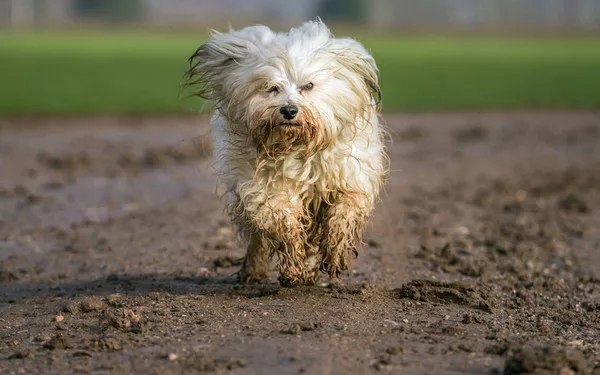English Cocker Spaniels, with their endearing expressions and silky coats, are a popular choice among dog enthusiasts. As potential pet owners consider bringing these charismatic canines into their homes, one crucial aspect to ponder is their size. In this comprehensive article, we delve into the dimensions of English Cocker Spaniels, exploring their physical characteristics, growth patterns, and the factors influencing their size.
Historical Background
Before delving into the specifics of English Cocker Spaniel size, a brief exploration of their historical background is essential. Originating in the United Kingdom, these spaniels were initially bred for hunting woodcock, giving rise to their distinctive name. Over the years, selective breeding has refined their traits, resulting in the charming and adaptable companions we know today.
Breed Standards
To understand the size of English Cocker Spaniels, it’s imperative to refer to established breed standards. These guidelines, set by kennel clubs such as the American Kennel Club (AKC) and The Kennel Club (UK), provide a blueprint for the ideal physical attributes of the breed. Breed standards cover various aspects, including size, coat color, and overall structure.
Size Parameters
According to the AKC, male English Cocker Spaniels typically stand between 15 to 17 inches at the shoulder, while females measure slightly smaller, ranging from 14 to 16 inches. It’s important to note that these measurements are based on the height at the shoulder, providing a standardized way to gauge the overall size of the breed.
Growth Stages
Understanding the growth stages of English Cocker Spaniels is crucial for prospective owners, ensuring proper care and attention during formative months. Like all dog breeds, English Cockers undergo distinct phases of development.
Puppyhood
During the puppyhood stage, English Cocker Spaniels are particularly small and delicate. Puppies generally weigh between 12 to 20 pounds, with males tending to be slightly larger than females. Adequate nutrition, regular veterinary check-ups, and a nurturing environment are imperative to ensure healthy growth during this critical phase.
Adolescence
As English Cocker Spaniels enter adolescence, typically around six months to a year, their growth rate slows down. At this stage, owners can expect their pets to gain muscle mass and develop a more defined physique. It’s essential to adjust feeding routines to accommodate the changing nutritional needs of growing dogs.
Adulthood
By the age of one, English Cocker Spaniels typically reach their full height, with their bodies continuing to mature until around 18 months. Adult males generally weigh between 28 to 34 pounds, while females maintain a slightly lighter range of 26 to 32 pounds. Monitoring weight and ensuring a balanced diet become paramount to maintaining optimal health.
Factors Influencing Size
Several factors contribute to the size of English Cocker Spaniels, both in terms of height and weight. These factors play a pivotal role in shaping the physical characteristics of individual dogs within the breed.
Genetics
Genetics, a fundamental aspect of any dog breed, significantly influences the size of English Cocker Spaniels. The traits inherited from parents play a key role in determining the ultimate stature of the offspring. Responsible breeding practices aim to maintain breed standards while minimizing the risk of genetic disorders that may impact size.
Nutrition
Proper nutrition is essential for the healthy growth of English Cocker Spaniels. Puppies, in particular, require a well-balanced diet rich in essential nutrients to support their rapid development. As dogs transition to adulthood, maintaining an appropriate feeding regimen becomes vital to prevent obesity and related health issues.
Exercise
Regular exercise contributes not only to the overall well-being of English Cocker Spaniels but also influences their physique. Adequate physical activity helps maintain a healthy weight, develop strong muscles, and prevent joint issues. Tailored exercise routines should consider the energetic nature of this breed, ensuring they receive the necessary stimulation.
Health
The health of an English Cocker Spaniel can impact its size and overall physical condition. Regular veterinary check-ups, preventive care, and prompt attention to any health concerns are essential for ensuring that dogs reach their full potential in terms of size and vitality.
Variations within the Breed
While breed standards provide a general guideline for the size of English Cocker Spaniels, variations exist within the breed. These differences are not only influenced by genetics but also by regional breeding practices and individual variations.
Working Lines vs Show Lines
English Cocker Spaniels are often categorized into working lines and show lines. Working lines are bred primarily for their hunting and field abilities, while show lines prioritize conforming to breed standards for conformation events. As a result, there may be subtle differences in size and build between the two lines.
Regional Variances
Regional variations in breeding practices can also contribute to differences in size among English Cocker Spaniels. Breeders in different areas may prioritize certain traits, leading to variations that, while within the breed standard, might be noticeable.
Caring for an English Cocker Spaniel
Regardless of size, English Cocker Spaniels make wonderful companions. To ensure their well-being and happiness, owners should be attentive to their specific needs.
Nutrition and Diet
A balanced and nutritious diet is vital for the health of English Cocker Spaniels. High-quality dog food, appropriate portion sizes, and regular feeding schedules contribute to overall well-being. Owners should consult with veterinarians to determine the best diet for their individual pets, considering factors such as age, activity level, and health status.
See Also:Lifespan of American Eskimos: A Comprehensive Overview
Exercise Requirements
English Cocker Spaniels are an active breed that thrives on physical activity. Daily exercise, including walks, playtime, and interactive games, helps fulfill their energetic needs and prevents behavioral issues. Engaging in activities that stimulate their natural instincts, such as retrieving games, can be particularly enjoyable for this breed.
Grooming
The silky coat of English Cocker Spaniels requires regular grooming to maintain its health and luster. Brushing a few times a week helps prevent matting and reduces shedding. Additionally, routine ear cleaning, nail trimming, and dental care contribute to overall hygiene.
Veterinary Care
Regular veterinary check-ups are crucial for monitoring the health of English Cocker Spaniels. Vaccinations, preventive treatments for parasites, and dental examinations are integral components of a comprehensive healthcare routine. Owners should be proactive in addressing any signs of illness or discomfort promptly.
Conclusion
In conclusion, the size of English Cocker Spaniels is defined by breed standards, genetics, and various environmental factors. Understanding the growth stages, variations within the breed, and the influence of genetics, nutrition, exercise, and health is essential for responsible ownership. By providing attentive care, meeting their specific needs, and embracing their unique qualities, owners can ensure a fulfilling and harmonious relationship with these charming companions. Whether in the field or curled up at home, English Cocker Spaniels, with their delightful personalities and moderate size, make a delightful addition to families and individuals alike.
Related Topics:
A Guide to the Best Food Choices For Your American Eskimo Dog
What Are American Eskimo Dogs Bred For?
Why Your American Eskimo Dog Sheds More Than You’d Expect

























